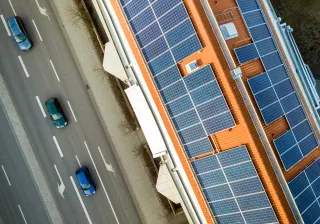Integrating Building Information Modeling (BIM) with Life Cycle Assessment (LCA) drives efficiency and environmental responsibility in construction. The Nordic cooperation project BIM4LCA provided guidance to designers on creating building designs in building information models that facilitate the efficient calculation of a building’s carbon footprint. This ensures that the designs are prepared in a format that allows for a fluent and effective assessment, helping to meet the upcoming regulatory limit values for carbon emissions. Harmonising input information for LCA will enhance the sector’s capability and trustworthiness to create a more sustainable built environment.
Building Information Modeling (BIM) can aid low-carbon building design by enabling early comparison of design alternatives, leading to optimal solutions. Nordic countries are setting the requirements to evaluate the building carbon footprint. The LCA calculation method is the same in Nordics and Estonia, with some minor national differences in what building structures and life cycle phases are included in LCA. Now BIM4LCA created common guidance to harmonise the design data to be used as input for LCA.
BIM-based building LCA is not an extra workload!
Using BIM for building LCA necessitates that different design disciplines learn to model in a more detailed and structured way. A common concern with BIM-based design is the potential extra workload for designers. BIM4LCA explored the minimum BIM model requirements to support LCA calculations effectively. The project concludes that BIM modelling does not increase the amount of information designers need to produce, as they already generate similar data for permitting, procurement, construction, and maintenance.
Here is how to learn BIM-based building LCA
To support stakeholders’ learning, BIM4LCA created BIM requirements that can be used as guidelines for creating BIM models that support compulsory carbon footprint assessment. Also, BIM4LCA developed a data flow that is required to convert BIM data efficiently to a usable form for LCA evaluation and instructions for BIM-based material inventory, transcribed to all Nordic languages and Estonia.
Additionally, the BIM4LCA project designed two example buildings with native BIM models, which can be used to learn how to model for BIM-based building LCA. The models were produced for various design disciplines: architectural, structural, heating, ventilation and air-conditioning (HVAC) and electrical. Also, the BIM models’ Industry Foundation Classes (IFC) files are available. IFC is an open international standard for exchanging BIM data. The models are free for anyone to use under the Creative Commons license (CC BY-SA 4.0).
Finally, BIM4LCA produced seven educational videos to help practitioners learn BIM-based building LCA. These videos guide BIM model authors on how to model effectively, supporting LCA specialists in performing BIM-based quantity take-offs and mapping results to LCA calculation software.
We wish all stakeholders inspiring moments of learning!
Read more about the project on VTT´s website, Nordic Sustainable Construction website and watch the webinar on BIM4LCA results.
BIM4LCA has produced the following outputs:
- Report on BIM for Building LCA – Enhancing Nordic Sustainable Construction through Digitalisation, including
- BIM to LCA process description supporting the calculation and reporting of compulsory LCA in building construction projects
- Guidelines for reliable BIM-based material inventory (bill of materials)
- Pathway towards automated BIM-based LCA for instant feedback and low-carbon design solutions
- Report on The Operating Environment of Building LCA and BIM in the Nordics and Estonia
- Building LCA and BIM practices and constraints and enablers for harmonising building LCA
- Enablers and hindrances for BIM-based building LCA in the Nordic countries and Estonia
- Two example buildings with native BIM models and IFCs for practitioners to learn BIM-based building LCA
- Educational videos on BIM-based LCA
The BIM4LCA project (May 2023 – Dec 2024) is a part of the Nordic Sustainable Construction programme initiated by the Nordic Ministers of Construction and Housing and funded by Nordic Innovation. The programme contributes to the Nordic Vision 2030 by supporting the Nordics in becoming the leading region in sustainable and competitive construction and housing with minimised environmental and climate impact. BIM4LCA is part of the programme’s Work Package 1, led by the Finnish Ministry of Environment.
The BIM4LCA work has been carried out by VTT Technical Research Centre of Finland (consortium leader), Granlund, Gravicon and Insinööritoimisto Kallinen, and the Nordic partners: Sberesearch, Rangi Maja OÜ, Bengt Dahlgren Stockholm AB, Gravicon DK and Asplan Viak AS.




